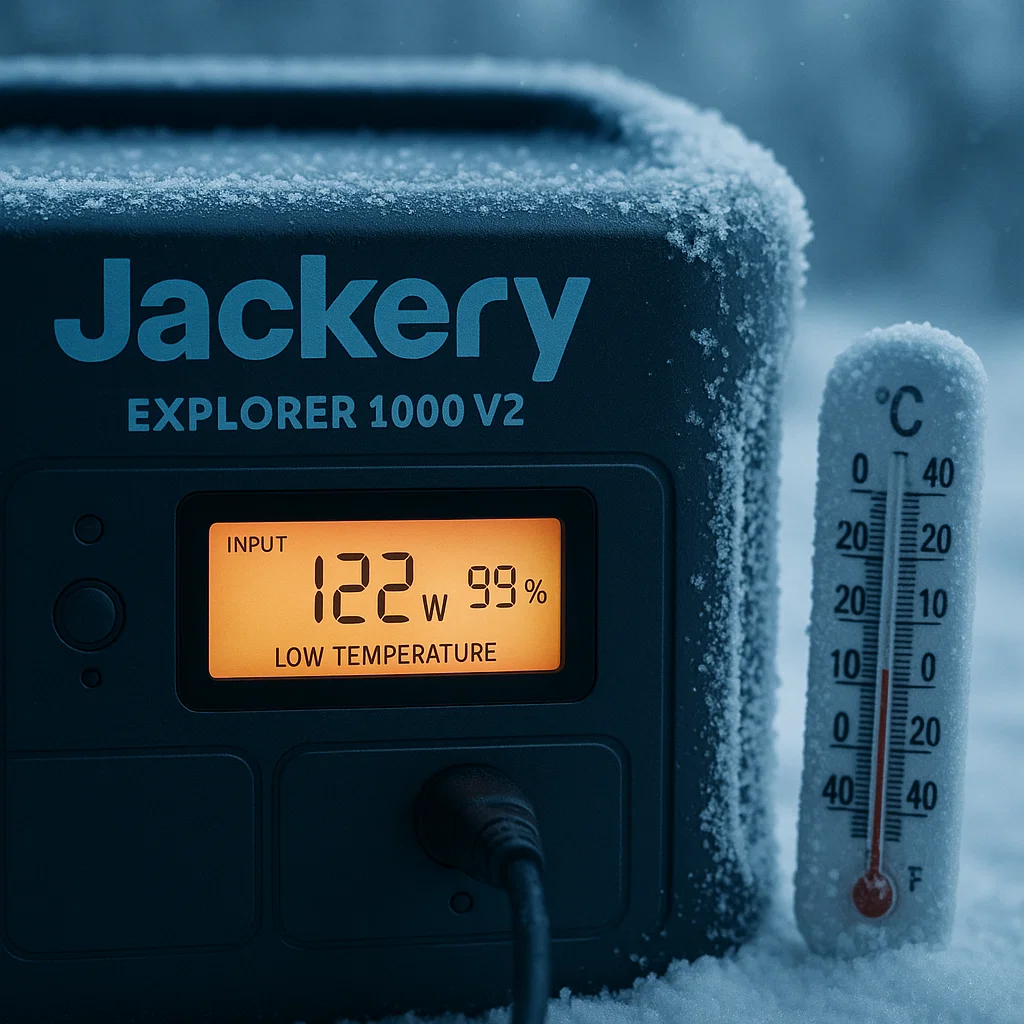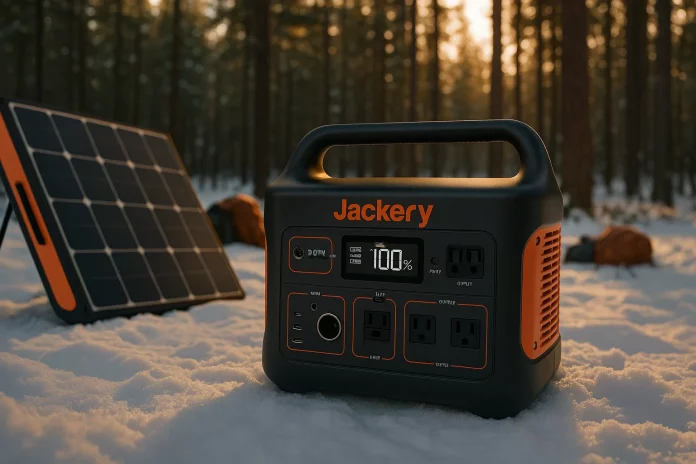Published for Time Business News | Outdoor Recreation & Technology Sector Analysis
The convergence of outdoor recreation and clean energy technology is creating one of the most compelling investment opportunities in consumer electronics. As outdoor enthusiasts increasingly demand reliable off-grid power solutions, the portable power station market is experiencing explosive growth that’s catching the attention of investors, manufacturers, and venture capitalists worldwide.
The numbers tell a remarkable story. The global portable power station market was valued at approximately $603 million in 2024 and is projected to surge to $1.1 billion by 2032, representing a compound annual growth rate of 7.5%. Some analysts project even more aggressive growth, with certain forecasts suggesting the market could reach $1.7 billion by 2030. This expansion is being driven by fundamental shifts in how consumers engage with outdoor activities and their growing need for sustainable power solutions in remote locations.


The Perfect Storm: Multiple Tailwinds Driving Growth
Several converging trends are fueling this market expansion. Outdoor recreation participation has reached record levels, with over 57% of Americans participating in outdoor activities in 2023. The outdoor recreation economy now contributes $640 billion to U.S. GDP, representing 2.3% of the nation’s economic output and supporting over 5 million jobs. This massive engagement with outdoor pursuits creates sustained demand for portable power solutions.
Market Snapshot: The U.S. portable power station market alone is expected to grow from $294 million in 2025 to $505 million by 2032, with North America commanding over 40% of global market share.
The RV and van life movements have emerged as particularly strong drivers. Over 35 million Americans camped in an RV in 2022, and this demographic requires consistent power access for smartphones, laptops, medical devices, and modern camping amenities. The rise of “glamping” and luxury camping experiences has further elevated expectations for power availability in outdoor settings.
Climate events and infrastructure concerns are adding another dimension to market growth. Aging electrical infrastructure in the United States has led to more frequent power outages, with major disruptions affecting millions. This reality has transformed portable power stations from recreational gear into essential emergency preparedness equipment for homes and businesses.
Technology Innovation Driving Premium Segments
Product innovation is reshaping the competitive landscape. Lithium-ion battery costs have plummeted 97% since 1991, making energy storage commercially viable and accessible. Modern portable power stations now feature solar charging capabilities, smart connectivity, and rapid charge times that were impossible just a few years ago. For example, recent product launches like the Jackery Explorer 1000 v2 demonstrate how manufacturers are pushing boundaries with enhanced performance, durability, and intelligent power management systems.
“Strategic and financial buyers’ acquisition criteria is increasingly focused on outdoor recreation companies that invest in technology and data analytics to enhance product innovation, design, performance, and experience.”
The integration of solar technology represents a particularly promising growth vector. The broader camping equipment market is seeing robust demand for solar-powered devices, with the rechargeable camping gear segment projected to reach $4.8 billion by 2030. Consumers are gravitating toward comprehensive solar camping gear solutions that combine portability, sustainability, and reliability—driving premium pricing and higher margins for manufacturers.
Investment and M&A Activity Heating Up
The outdoor recreation and technology sector is experiencing significant consolidation and investment activity. Industry leaders like Jackery, EcoFlow, Goal Zero, and Bluetti are capturing market share through strategic product launches and brand differentiation. Meanwhile, established players from adjacent industries are entering the market through acquisitions and partnerships, recognizing the long-term growth potential.
The competitive dynamics favor companies that can achieve several key objectives: developing proprietary battery management systems, establishing strong direct-to-consumer channels, building trusted brand identities, and innovating in both product design and sustainability. Distribution through major retailers like Amazon, Home Depot, Walmart, and Costco remains critical, but e-commerce growth accelerated by the pandemic has created new opportunities for nimble brands to reach consumers directly.
Regional Opportunities and Global Expansion
While North America leads in market size and maturity, Asia-Pacific represents the fastest-growing region. China’s outdoor recreation industry is developing rapidly, supported by government policies promoting leisure activities and growing consumer purchasing power. Australia’s frequent extreme weather events and high photovoltaic penetration have created strong demand, while emerging markets in Africa, South America, and Mexico are experiencing accelerated adoption due to unreliable grid infrastructure and abundant solar resources.
Europe’s market is driven by sustainability consciousness and the rapid growth of the electric vehicle sector, which creates technological synergies and shared supply chain benefits. The region’s strong commitment to renewable energy and carbon reduction targets positions it as a key market for solar-integrated portable power solutions.
Challenges and Strategic Considerations
Despite robust growth projections, the sector faces headwinds that savvy investors must consider. Inventory normalization following pandemic-era demand spikes has created promotional pricing pressure, particularly for big-ticket items. Competition is intensifying as new entrants recognize market opportunities, potentially compressing margins. Supply chain complexities, including tariff considerations and battery material sourcing, add operational risk.
Consumer education remains an ongoing challenge. Many potential customers still don’t fully understand the capabilities and limitations of portable power stations compared to traditional fuel generators. Manufacturers that invest in content marketing, comparison tools, and customer education tend to build stronger brand loyalty and command premium pricing.
The Road Ahead: What Investors Should Watch
Several factors will determine which companies emerge as long-term winners in this space. Battery technology advancement continues at a rapid pace, with solid-state batteries and improved energy density on the horizon. The company that successfully commercializes next-generation battery technology at scale could gain significant competitive advantages.
Integration with renewable energy ecosystems presents another opportunity. As residential solar adoption grows, portable power stations that can seamlessly integrate with home solar systems and serve dual purposes for both emergency backup and outdoor recreation will likely capture premium market segments.
The regulatory environment around energy storage is evolving. Subsidies for clean energy products, safety certifications, and import/export regulations will all impact market dynamics. Companies with strong compliance infrastructure and government relations capabilities may be better positioned to navigate this landscape.
Investment Thesis: Why This Market Matters
The portable power station market sits at the intersection of several secular trends: outdoor recreation growth, clean energy adoption, emergency preparedness awareness, and technological innovation. This confluence creates a rare opportunity for sustained growth across multiple customer segments and use cases.
For investors, the sector offers exposure to consumer discretionary spending, energy transition themes, and technology innovation—all with tangible products that solve real customer problems. The market is still relatively fragmented, suggesting consolidation opportunities ahead. Companies with strong brand equity, technology differentiation, and efficient operations are likely to see valuation multiples expand as the market matures.
The outdoor recreation economy’s demonstrated resilience and growth trajectory—expanding 37% between 2012 and 2023, faster than the overall U.S. economy—provides confidence in sustained consumer demand. As more Americans prioritize experiences over possessions and seek connections with nature, the tools that enable comfortable, connected outdoor experiences will remain in high demand.
Conclusion
The portable power station market represents more than just a niche product category—it’s a bellwether for how technology is reshaping outdoor recreation and consumer preparedness. With robust growth projections, improving unit economics, and expanding applications across residential, commercial, and recreational sectors, the market offers compelling opportunities for manufacturers, investors, and entrepreneurs.
As climate concerns drive interest in clean energy solutions and outdoor participation continues its upward trajectory, portable power stations are transitioning from specialty items to mainstream products. The companies that successfully balance innovation, quality, sustainability, and customer experience will be well-positioned to capture significant value in this rapidly expanding market over the coming decade.


